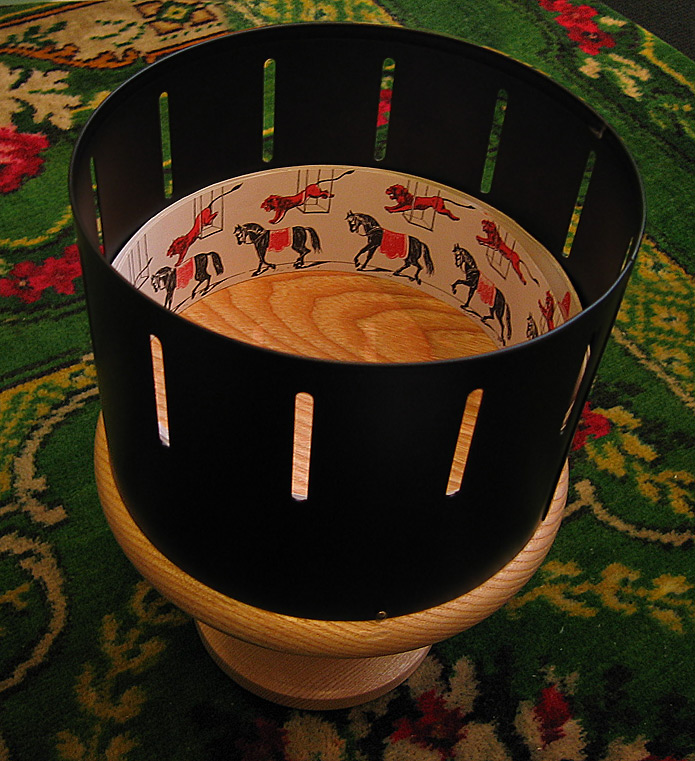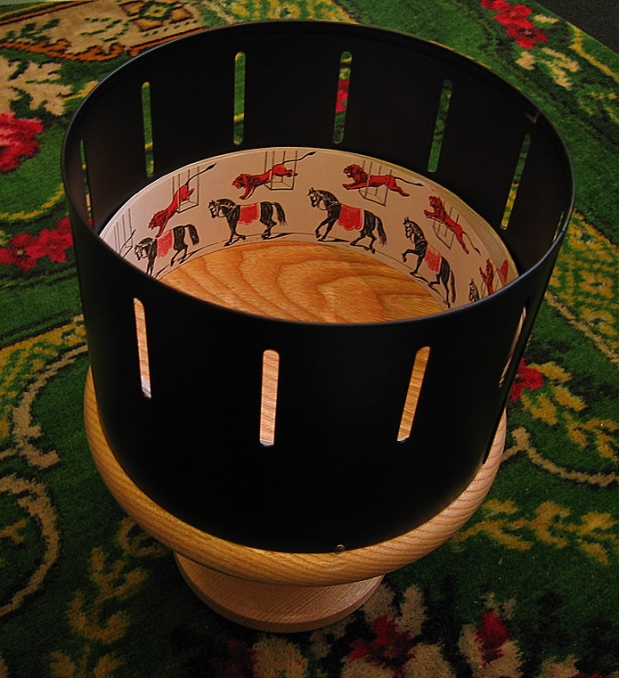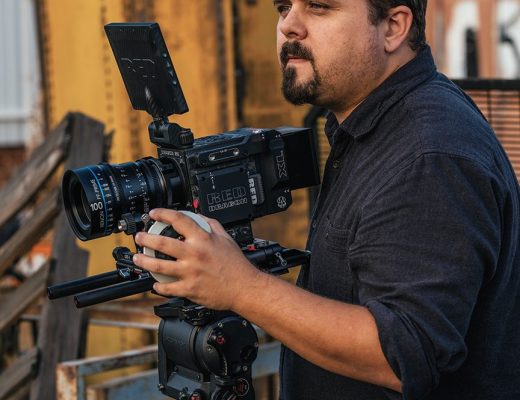
There seems little doubt that display technology and the way we experience media today won't necessarily look the same throughout the 21st century, any more than Downton Abbey looks like Enter the Void, or a zoetrope resembles Call of Duty. There are, for example, nascent signs around us of technologies that could radically transform how we experience what we now call cinema, and the most recent to make its debut is 48 frames-per-second HFR technology.
A recent experience co-hosting an episode of the VFX Show on The Hobbit and the debut of 3D HFR left me unsatisfied that we had done the subject justice when it comes to the question of what HFR means to cinema. I was left with questions about where HFR is headed next, and I thought I’d share these, starting with the most basic.
What is 3D HFR, and why did it come about?
Literally “High Frame Rate 3D,” HFR does nothing more than double the number of frames displayed, but it came about to solve a perceived limitation of 24fps display when combined with stereo 3D: namely, that stuttery, motion-blurred 24fps, which has been with us since the 1920s (and was at least partially motivated as a compromise to save Hollywood money on film stock) breaks the stereographic illusion.
Is HFR really a major innovation in cinema?
No, and yes. In his recent article on this site, Jeff Foster gave an overview of display technology and his own impressions of the film, amply demonstrating the HFR is, by itself, nothing new, until one adds that it is displayed on the big screen, in stereo. Since this site caters to professionals, it seems safe to add that we are all aware that we see high frame rates all the time, from home video to newscasts and reality television to computer games, and it is in fact the lower 24fps that is in the minority when one considers the sum total of video material in existence worldwide.
Nonetheless, HFR marks a radical shift in the cinematic experience, so much so that some of us would even argue that the HFR experience defies the term “cinematic” entirely. More thoughts about that further down.
What problems are solved by HFR?
HFR differs from other high-frame-rate display technologies in that it is designed specifically to go hand in hand with stereo 3D display on the big screen. Joe Letteri, VFX supervisor of the Hobbit, argues that the trade-off of strobing/stuttering and motion blur cripples the stereo display experience, particularly in scenes of fast motion.
Some of us would counter that this deflects the debate away from whether we really want to watch movies in stereo to begin with, but for the sake of argument, lets accept that HFR does, in fact, better preserve the illusion of 3D.
What problems does HFR create, or emphasize?
Here is where the discussion becomes far more subjective. Much has been said about how HFR is perceived by many users as a constant distraction, and how it breaks the cinematic illusion, causing scenes to look more “fake” or “like a set” or “stagey.” The counter-argument from experts such as Letteri is that we (and in particular, those of us who are beyond college age) simply aren’t acclimated to the display technology.
Much of the back-and-forth about the specific deficits of HFR in The Hobbit misses the bigger picture for Hollywood, an industry that has never let aesthetic get in the way of progress: this is a first and imperfect step toward a radically different theatrical viewing experience. The clear goal of HFR is to provide the audience with a more immersive experience, and of all of the high-frame-rate technologies that precede it, computer games are clearly the most influential here. Young males under 25 are often regarded as the pivotal demographic for theatrical box office numbers, and this is the demographic that has the most first-hand experience with first-person and other 3D games that, played on a computer with a contemporary graphics card, can deliver 100fps and above.
In a way, you could say that HFR in its current state only reveals other flaws about movies, and in particular, the stereographic experience as it exists today – with the clunky loaner polarized glasses, framed on a rectangular screen. A major flaw of 3D stereoscopy itself is that it doesn’t allow me, as the viewer, to choose whether I direct my gaze to the foreground or background. If motion blur is an annoyance that can be eliminated for stereo 3D, depth of field then comes into focus (pun very much intended) as a clunky cinematic convention. The thought that occurred to me as I tried simply to focus on scenes in the Hobbit went something like, “If the goal is to immerse me in this scene, like in a game, why can’t I gaze with crystal-clear focus on all areas of the scene?”
The general reaction to the Hobbit is that scenes that work well projected as a “normal” 24fps movie didn’t hold up at 48fps, and I can say that, in a brief experiment sneaking into the room next door at the Metreon in which the film was also displayed in stereo 24fps, I found that only there could I finally relax and enjoy the beauty of the movie, rather than fight constant distraction.
My kids, however, noticed no difference.
What might the future hold for HFR?
Here we go even deeper into subjective territory. It’s too early to judge whether the debut of HFR will be regarded as a flop by other filmmakers such as James Cameron who have already thrown down for the format. In briefly researching for the podcast and then for this article, it was difficult to locate any enthusiastic reviews of the format as implemented in The Hobbit.
On the other hand, it’s impossible to believe that the genie will simply return to the bottle. The truth is that Hollywood’s quest to provide a more immersive experience will continue across the coming decades, and we are likely to be blessed (cursed?) with other new display technologies that make the experience of The Hobbit in HFR look crude and backward, but also a clear landmark on the path to something entirely new—say, immersive 3d that doesn’t require any sort of headgear, approaching the long-coveted Holodeck experience.
Perhaps even Picard, Riker or Crusher would agree that whatever the Holodeck is (and it may even be evocative, just as direct experience can be) it’s not cinema. As Stu Maschwitz has amply and articulately laid out, creating a cinematic experience is a process of elimination. We perceive scenes and stories as more cinematic when they show us less: shallower depth of field, fewer colors (as few as 2 or 3) in the grade, a little vignette to remove the borders. To me, cinema is effective when visceral and evocative, refining the moving image to just what is needed to hit us emotionally and let our imaginations do the rest. That our imaginations are at work even when watching a lower frame rate may seem like a stretch, or it may in fact be the logical extension of the truism that a single image contains the value of at least a thousand words.
So what did you think of The Hobbit in HFR?
That is a question for those of you who have read to the end; here is my brief opinion to kick things off. Although we were restrained in our criticism on the VFX Show, I disliked the film and hated the experience of watching it in 3D HFR, both for much the same reason: I think the whole experience took a story that is light and has universal appeal and tried to turn it into an epic experience to rival our memories of what the Lord of the Rings movie trilogy was.
The Hobbit itself – the book to which Jackson and his crew labored to be true – is not Lord of the Rings; it is a children's tale of a journey and encounters with fanciful characters, chief among them Gollum. The highlights of the movie were the characters: Gollum above all, who while consistent with the LotR character was dramatically improved in look, feel and expressivity to become perhaps the best CG character I've ever seen in a live action scene. The Stone Giants, the trolls – these fanciful, fun encounters were what I wanted to see, not an adaptation so slavishly devoted to the perceived intent of Tolkein that a full hour was spent debating the inciting incident in the prologue before the journey is even begun.
3D HFR in this implementation is a dreadful experience, a 3 hour distraction. The feeling of never being able to settle down and enjoy the movie in this format reminded me of the Uncanny Valley, the term used for 3D character animation that approaches but misses realism, creating an experience much more disconcerting than if the animation were more stylized. I would propose that a similar term – the Canny Valley, perhaps, or simply TMI-Vision, be applied to the experience of watching an otherwise cinematic presentation in 3D HFR. While I'm interested to see where Hollywood the immersive experience, including all of its missteps and full blown disasters on the way to an entierly unique experience, I am not among those who wants an experience entirely unique from what I would call good cinema.

Filmtools
Filmmakers go-to destination for pre-production, production & post production equipment!
Shop Now













